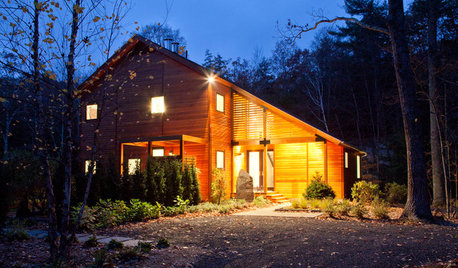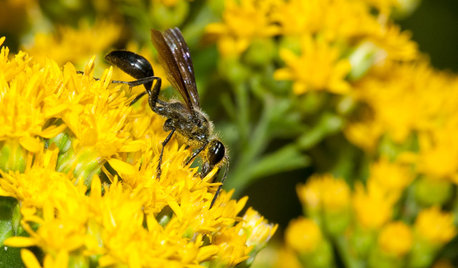Swarm Cells
txnyia1
18 years ago
Related Stories

GARDENING GUIDESInvite Cellophane Bees to Your Garden by Providing Patches of Bare Soil
Look for cellophane bees (Colletes) pollinating flowering trees and shrubs in U.S. gardens this spring
Full Story
GARDENING FOR BUTTERFLIESGardening for the Bees, and Why It’s a Good Thing
When you discover how hard bees work for our food supply, you may never garden without them in mind again
Full Story
GARDENING GUIDESHow to Switch to an Organic Landscape Plan
Ditch the chemicals for a naturally beautiful lawn and garden, using living fertilizers and other nontoxic treatments
Full Story
CONTEMPORARY HOMESHouzz Tour: Strong, Modern Lines Stand Up to the Trees
Modernism takes kindly to the New York woods, with double-height ceilings for openness and a burbling creek for music
Full Story
FUN HOUZZHow to Survive an Epidemic of Walking Dead
Tips to use around the house and garden to prep for the zombie apocalypse
Full Story
GARDENING GUIDESMeet the Grass-Carrying Wasp, a Gentle Pollinator of Summer Flowers
These fascinating insects nest in wood cavities and hollow plant stems
Full Story





pennsylvania_pete
bambooo
Related Professionals
South Elgin Landscape Architects & Landscape Designers · Medford Landscape Contractors · Allentown Landscape Contractors · Bound Brook Landscape Contractors · Conroe Landscape Contractors · Deerfield Landscape Contractors · Forest Hills Landscape Contractors · Huntington Landscape Contractors · Kahului Landscape Contractors · Kettering Landscape Contractors · Lake Saint Louis Landscape Contractors · Roseville Landscape Contractors · Saint Paul Landscape Contractors · Santa Maria Landscape Contractors · Wanaque Landscape Contractorsccrb1
pennsylvania_pete
honeyman46408